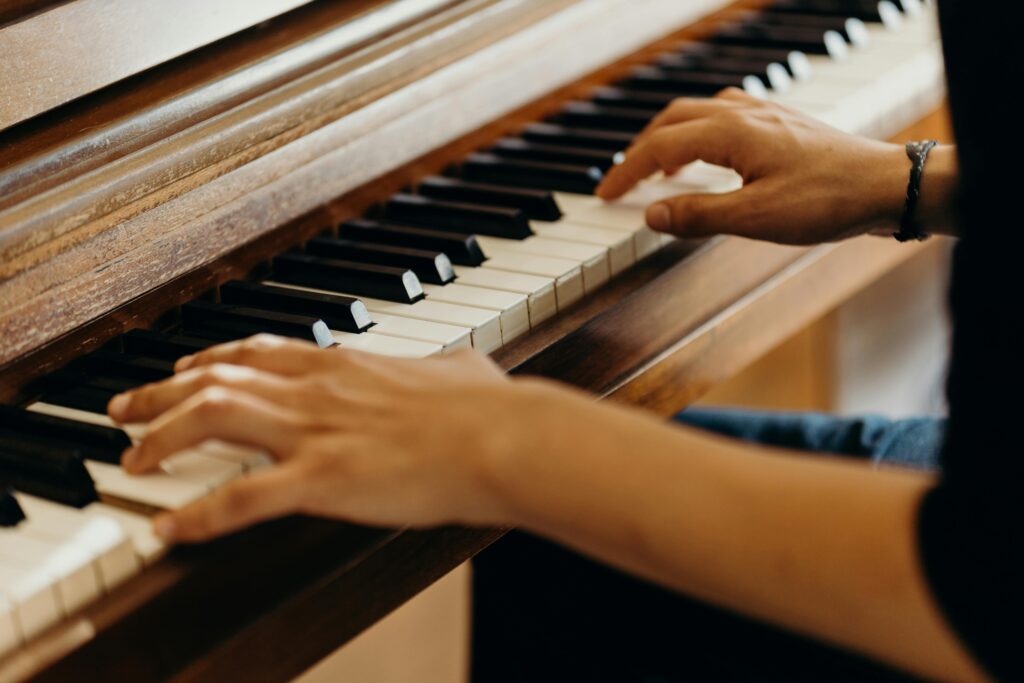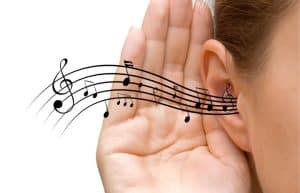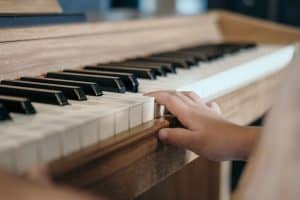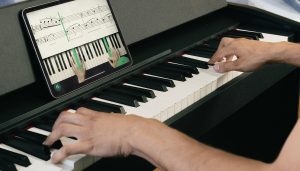Learning to play the piano by ear is a valuable skill that allows you to connect with music in a deeper, more intuitive way. Instead of relying solely on sheet music, playing by ear enables you to hear melodies, chord progressions and rhythm and recreate it on the piano. Whether you’re a beginner or experienced player, this ability can open up a world of creative possibilities. In this guide, we’ll explore the first step to playing by ear, from listening techniques to experimenting with basic chords and rhythms, helping you unlock your musical potential and play freely.

Playing by ear begins with listening
Playing by ear starts with one simple yet powerful skill: listening. It’s about truly paying attention to the sounds around you, whether it’s a song on the radio or a melody in your head. The more you listen, the better you become at recognizing patterns in music, like melody, harmony and rhythm. This awareness forms the foundation of playing by ear. While reading piano sheet music can help with understanding structure, actively listening trains your brain to pick up on musical devices that help you replicate what you hear on the piano.
Playing piano by ear: starting with a triad
A triad is made by playing 3 notes at the same time. This is how you build a triad:
- Start by finding C in your left hand
- Play C with your left hand little finger E with your middle and G with your thumb.
- Lift your hand and return to these 3 keys. As you play them they should make a pleasing sound. This sound is called a C-major triad, which is a basic piano chord.
- Now place your right hand on the same pattern of notes, your thumb on Middle C (the C which you find in the middle of your keyboard). With your right hand you can play a melody using any of the 5 notes under your fingers. When you are ready, play by ear using both hands together.
- If you are feeling confident you can progress to using the full C major scale.
- To extend this you can begin to move your left-hand pattern being sure to keep the same sequence of missing out a note between each key.
- This means you are playing the diatonic triads of C major.
- Experiment with melody and chord combinations and try to find melodies and chord movements you recognise from your favorite songs.
Playing piano by ear: experimenting with a rhythm
Experimenting with rhythm is a key part of playing piano by ear. Once you’ve developed your listening skills, it’s time to explore how different rhythms shape the music you play.
- Start by tapping along with a song, paying attention to its beat, tempo and how the rhythm flows.
- Try recreating that rhythm on the piano, using simple chords or melodies.
- Experiment with changing the tempo, adding pauses, or shifting the timing slightly to create your own variations.
If you’re working with easy piano songs, this is a great way to practice and understand how rhythm enhances the music.
Now it is time to build on your improvisations. You can do this by experimenting with rhythm in the left hand.
- Choose a comfortable counting speed and count to 4, playing the left-hand triad on each count, 1, 2, 3, 4. This will give a more upbeat feel to your song.
- To really feel the beat play louder on 1 and 3 and quieter on 2 and 4.
- You can also play one key at a time, making an ‘arpeggio’. You’ll create an even richer sound if you press the sustain foot pedal with your right foot.
- Try and incorporate this movement and pulse into a recognizable tune or melody.
These are the first steps in getting to grips to playing by ear. Be patient, take your time and really listen to the sound you make and you’ll be playing by ear in no time! If you ever hear something you want to play but can’t quite figure out, Skoove has you covered. With tutorials on a wide variety of pieces across many genres you will always be able to find something to play.
Conclusion
Learning to play the piano by ear is an exciting journey that unlocks your creativity and deepens your connection to music. By developing your listening skills and experimenting with triads, rhythms and improvisation, you build a solid foundation for intuitive playing. Whether you’re replicating familiar tunes or creating something entirely your own, this skill fosters confidence, flexibility, and personal expression. With patience and practice, you’ll discover the joy of playing freely, guided by your ear and imagination, turning your piano into a true extension of your musical voice.
Author of this blog post:

Roberta Wolff started piano lessons at the age of five and is still enjoying learning! Currently, she teaches piano pedagogy and performance pedagogy at post graduate level in the UK. Her other work includes running a private teaching practice for students of all ages and abilities and creating learning and practice resources. Roberta loves writing as a means to supporting others on their piano journey.
Published by Lydia Ogn from the Skoove team














